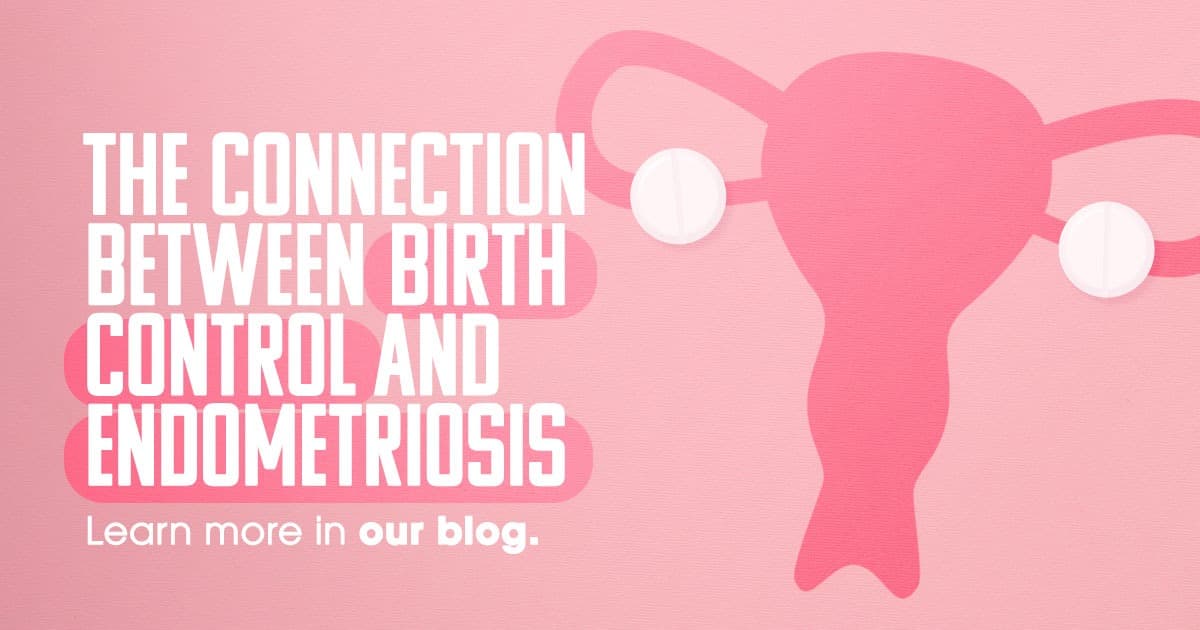Endometriosis affects 1 in 10 women of reproductive age. It can impact all aspects of life and overall well-being in severe cases. The search for a cure continues, but treatments are available to help manage your symptoms. Birth control therapy is one option that targets the same factors involved in the development and progression of endometriosis. By using the therapeutic properties of birth control for endometriosis, we are reducing its toll on women in the prime of their lives.
Endometriosis and the Menstrual Cycle
The uterus is lined with a special type of tissue called the endometrium. During the menstrual cycle, hormones cause the endometrium to grow, then shed and bleed so it can be removed from the body. Endometriosis occurs when endometrium tissue grows outside of the uterus, most commonly in the abdomen, where it doesn’t belong. These growths also respond to the hormone fluctuations in the menstrual cycle and swell and bleed.

This type of tissue shouldn’t be outside the uterus where the body cannot easily remove it. Over time the growths from endometriosis can cause inflammation, scarring, and pain, especially before and during menstruation.

Using Birth Control to Treat Endometriosis
During the menstrual cycle, the endometrium tissue responds to fluctuations in the reproductive hormones, especially estrogen which is the signal for it to grow.. Birth control and other hormonal medications prevent pregnancy by targeting the same reproductive hormones.
Similarly, they are also effective as endometriosis treatments because they both involve suppressing the reproductive hormones that drive the growth of tissue. Types of birth control that work for endometriosis include:
- Progestin-Only Therapy:
- Progestin works by preventing the growth of the lining of the uterus. This prevents regular periods and reduces endometrial-like tissue growth.
- This type of birth control is available as follows:
- Pill
- Injection
- IUD
- Skin patch
- Skin implant
- Combined Hormonal Contraceptives:
- Combined hormonal contraceptives use estrogen and progestin and are typically the first recommended birth control treatment for endometriosis. They work by thinning the uterine lining, which may reduce endometriosis pain.
- This type of birth control is available as follows:
- Pill
- Vaginal ring
- Skin patch
- Gonadotropin-Releasing Hormone (GnRH Agonists):
- GnRH agonists reduce the production of estrogen, which drives the reproductive cycle. The body goes into temporary menopause, which helps control the growth of endometriosis. Once treatment ends, your menstrual cycle returns.
- GnRH agonists are available as:
- Nasal spray
- Injection
- Gonadotropin Releasing antagonists (GnRH antagonists):
- These work in a similar way to the agonists above, by causing a temporary menopause.
- GnRH Antagonists are available as:
- Pills
From Humble Beginnings to a Future of Growing Benefits
When the first hormonal birth control hit the market in 1960, it was a pretty big deal because it gave women the power to say when they became pregnant. More than 60 years later, advances in technology and research continue paving the way for improvements in the types of birth control and potential new benefits beyond preventing pregnancy.

Seattle Clinical Research Center is looking for women with endometriosis to join enrolling studies evaluating potential new treatment options. Contact us today to learn more! Call (206) 522-3330 or visit our website.
Sources:
https://www.womenshealth.gov/a-z-topics/endometriosis
https://www.plannedparenthood.org/learn/health-and-wellness/endometriosis
https://www.acog.org/womens-health/faqs/endometriosis



